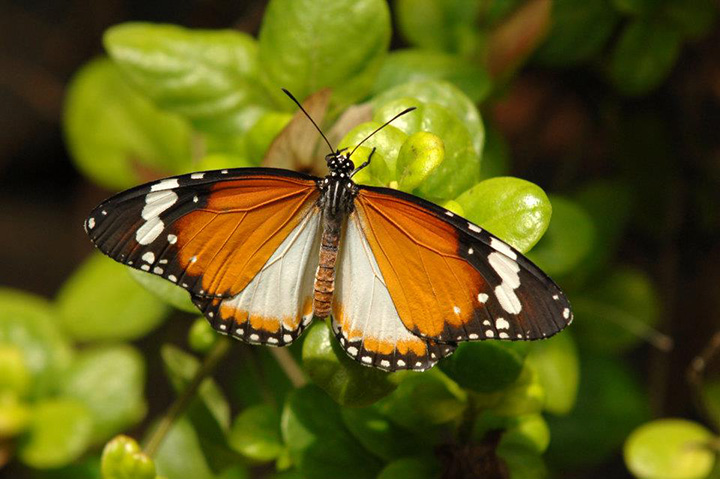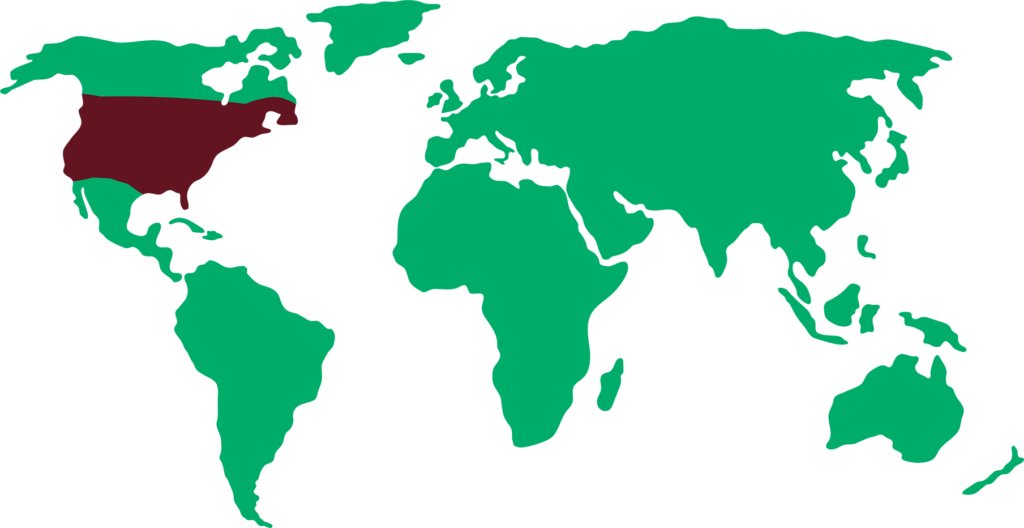MONARCH BUTTERFLY
Danaus plexippus

LENGTH

10 cm
WEIGHT

1 g
LIFESPAN

9 months
The wings of the monarch butterfly are orange with black lines and are very easy to recognise. It was given the name monarch in 1874 because it was considered one of the largest butterflies.
General characteristics
A lepidopteran insect belonging to the family Nymphalidae, this species carries out one of the most extensive migrations. The black veins of the female are much thicker than those of the male.
In addition, males have a dark spot in the centre of a vein on each wing. This spot is a gland that produces pheromones. Males are slightly larger than females.
Feeding
The larvae feed on various types of apocynaceae, silk cotton, giant milkweed or milkweed among others. Adults, on the other hand, obtain moisture and minerals from moist soil and wet gravel. They feed on milkweed, aster, thistles, carrots and alfalfa among many other plants.
Behaviour
Monarchs resident in North America migrate both north and south on an annual basis, travelling long distances and putting themselves in danger on numerous occasions. Only individual monarchs make part of the entire journey.
Wild butterflies have a much higher migration success rate than those that are captive-bred. Since the 19th century, monarchs have spread throughout the world and today there are many non-migratory populations.
Reproduction
It breeds mainly in open areas such as grasslands or crop fields, where the milkweed needed for the larva to develop grows. Only 30% of mating attempts result in copulation.
When the larva hatches from the egg, it eats the remains of the egg and then goes on to eat the plant on which it is found, until it becomes a robust, striped caterpillar. Finally, from the pupa emerges the orange butterfly with black stripes.
Threats
Endangered as of July 2022. It has lost much habitat due to the use of herbicides. Parasites and climate are other major threats to this butterfly species.
Distribution
It is widespread in North America, and since the 19th century has been introduced in New Zealand and Australia. In the Atlantic area, it resides in the Canary Islands, Azores, Madeira and Andalucía.

Did you know?
It is the best known butterfly in North America.
They can travel up to 4000 km.
The flight speed of adults is about 9 km/h.
Conservation status
